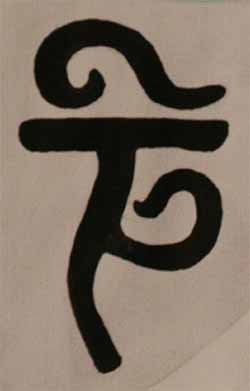Tibetan Lamas And The Mystery of Tulpas

The idea that the spirit is superior to matter and distinct from it is found in many civilizations. Tibetan religious, in particular, believe in the existence of a spiritual principle capable of creating mental forms visible to all, the tulpas.
A Frenchwoman among Lamas

After a long stay in the Himalayan foothills, it was in June 1912 that the Frenchwoman Alexandra David-Neel, aged 44, went to the “Highlands”, Tibet proper. She records the memory of this trip and the following ones in several writings, the first of which is My Journey to Lhasa, published in 1927. Many passages in the book are devoted to an extraordinary phenomenon, which the Tibetans call tulpa.
The tulpa is, for the Tibetans, the material projection of a form conceived by the spirit. It is a “ghost”, if you like, created by the monk or the initiate after a long meditation. It can take the form, indifferently, of an animal, a landscape, an object or a man. It is not a simple vision, but a phenomenon endowed with physical consistency, capable of emitting an odor, of emitting sounds, etc. As Alexandra David-Neel writes in Magic and Mystery in Tibet (1929): “The smell of a bush of ghost roses will spread far away; a ghost house will shelter travelers in the flesh ... ”
Is the universe a simple mental construction?
The creation of tulpas is explained thus by Tibetan lamas: according to their conception of the world, the universe around us is a simple mental vision; nothing exists in the order of the phenomenon, if not conceived by the mind of man. The aim of religious initiation is therefore to broaden the design capacity of the human spirit: its ability to pass from the order of potential - physical emptiness, or noumenal - to the order of tangible, or phenomenal, as many realities as possible.
That the physical form called by the Tibetans tulpa is the product of a simple hallucination is the explanation that immediately comes to the minds of Westerners. But then we have to believe that this hallucination is collective since, in many cases, the tulpa is seen, not only by the one who creates it, but also by those around it.
In the Tibetan world itself, the tulpa is variously interpreted. For some lamas, it is a physical form with an indisputable existence: which means that the spirit is capable of arousing physical forms. For others, the thought of the one who created the tulpa imposes itself on others and manages to make them see what it perceives itself; the creation of the tulpa would therefore be, in this case, a very strong suggestion.
The kylkhor, miniature worlds
Increasing the power of mental production is at the center of Tibetan religious education. The exercises which constitute the training of the young Tibetan monk are based on the mastery of breathing (which allows him to achieve serenity of the spirit) and on an intense practice of meditation. This is based on a kylkhor, diagram drawn on a fabric, written on paper or engraved in stone.
Some kylkhor, more elaborate than others, represent real worlds in miniature. At their center is a character, a guardian deity most often called a yidam. As he progresses, the young monk manages to “animate” his kylkhor, that is to say, to make the scenes drawn there and on which meditation applies, come to life. The pupil manages, at the end of his initiation, to understand that any phenomenon in this world is only a mirage from the imagination. He can therefore control his fears and his feelings. A lama having reached this stage is supposed, thus, to be able to resist the cold, to the point of surviving a night spent naked in the snow: the feeling of heat or cold appears indeed for what it is - an illusion of the spirit which he fights by another illusion, by stimulating by his will the internal heat of his body. The mind, therefore, has nothing more to fear from the material, it controls it entirely and can play with it.
Creating a tulpa

The sessions during which the tulpas are born have nothing comparable to those of Western spiritualism: they can take place in full sun, and they do not require the presence of a medium in trances. Alexandra David-Neel tells of having witnessed the creation of these mental forms. On one of these occasions, she saw, and even touched, the exact “double” of the man who was experimenting. The form aroused, however, had little consistency and gradually faded away. In another case, she saw the appearance of a double of the lama of her acquaintance, who was then miles away from her. Alexandra herself took care to verify the possibility of carrying out such a creation. After a few months of intense concentration, she managed to arouse a character who, according to her, was also seen by witnesses. But her inexperienced mind made her lose control of her creature; the appearance of it changed until it became very disturbing. By dint of efforts, Alexandra managed to drive it out of her mind, and it disappeared forever. But it sometimes happens, say the Tibetans, that the apparition continues to exist by itself and leads a life independent of its creator.









































































































































































































































































































































